I started to read an article titled: Pepper changed the world – but how many people know that? by Dr. Anna Sulan Masing. Basically she tells the story that colonialism was born from the greed for spices and led to today’s globalised world. I know because it’s my family’s story. And that sparked my interest to investigate. Join me on the pepper trail.
To fully tell this story, let me start with what pepper is. Previous posts about spice: Control the Spice, Divert the Global Wealth; Add a Little Spice to our American Kitchens; DIY Spice + Herb Blends; Blooming Toasty Spice; Berbere Spice Blend; and Pickling Spice.
—**—
Pepper Changed the World
Pepper is believed to be originally from Kerala located in Western Ghats, a humid and wet stretch of mountains located on the western coast of India. The most well-known peppercorn species is Piper nigrum, and while this plant is native to southern India, it is grown elsewhere in similar tropical regions, such as parts of Africa.
- IPCNet: The pepper vine thrives best in the tropics, in a moist, hot climate, at elevations from 1500 feet mean sea level, with an evenly distributed rainfall of about 100 inches. The richest growth is seen on fertile, flat or gently sloping land, rich in humus with good drainage and light shade.
To tell the story of peppers impact, I will quote from the Guardian. They wrote, succinctly, that the desire for spices such as pepper drove European expeditions eastwards, to cut out the middlemen who brought them overland. Ultimately, the desire to own and amass riches from these spices and similar goods drove colonialism. The unknown “east” became known and ownable. As Dr. Massing has written, Pepper’s origin story is nuanced, at times contradictory and always fascinating.
To fully tell the story, I want to start with what pepper is, its variety, and uses. So I will write about its role in global history in a part 2.

How to Taste Peppercorns
Descriptions of taste are hard, at least for me. I can identify some similar flavors to other things, but you might not feel the same way. So take any descriptions below cautiously, and not as what you would taste.
But taste is the only way to find the kind of pepper you prefer. For this to work, buy from a spice monger who can tell you all about the pepper, where it comes from, and its flavor profile. Then bring that small sample home and give it a taste test yourself.
Peppercorn Taste Testing (1, 2)
- Visually inspect the peppercorns for uniform size and color, and texture.
- For black peppercorns only, the darker the black peppercorn, the more robust the flavor.
- Fresh peppercorns should be firm, and not easily crushed by hand.
- Grind a small amount (½t) of the peppercorns, just prior to tasting it, so it is very fresh.
- Take a small ball of warm rice (or neutral piece of bread) and press it into the ground pepper to get a small amount (1/8t) onto the rice.
- Taste the pepper, looking for:
- heat
- acidity
- sweetness
- flavors
- Write it down so you can remember, especially if you are tasting other peppercorns.
Definition of Peppercorns
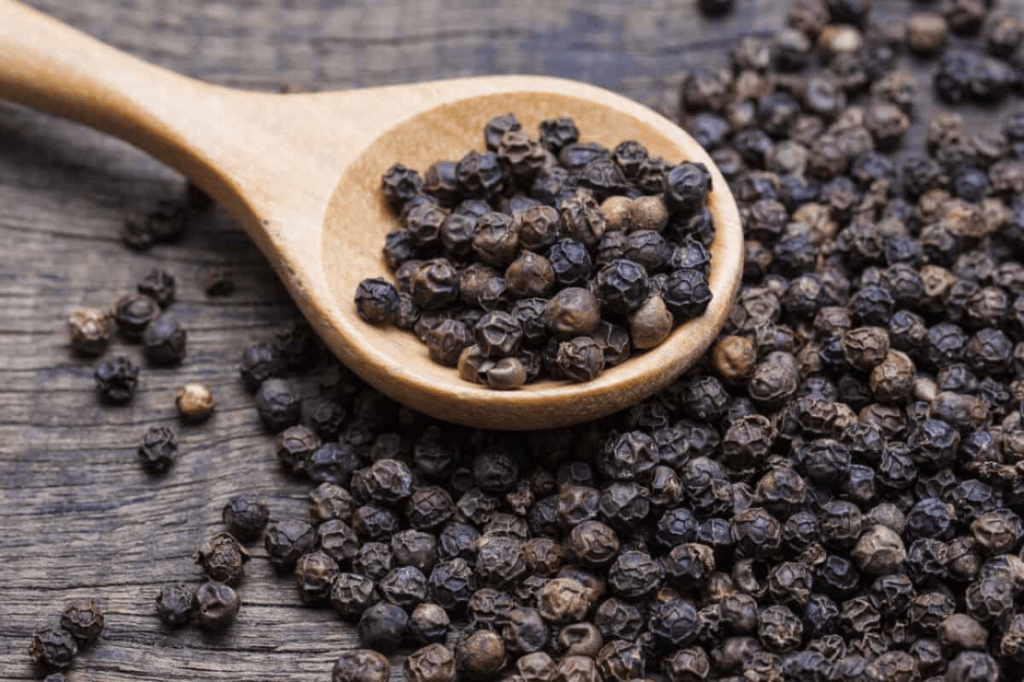
Black Peppercorns (Piperaceae)
Piperaceae is a family of 3600 species of flowering plants. Black pepper is native to South Asia and Southeast Asia, and has been known to Indian cooking at least since 2000 BCE. Just like wine, there are differences in various Black Peppercorn based on its age, terroir and maturity, after all they are the unripened fruit from a vine that has been cooked, cleaned, and dried.
- I buy Tellicherry pepper, it comes from an ancient Indian pepper terroir, known for producing full-bodied, robust and familiar flavors from fruity to grassy, or from citrus to pine. Bottomline is that it has a fresh, yet pungent oil, great for most foods. The sweet, balanced flavor and complex aroma make it a great stand-alone pepper. “Tellicherry” is name given to single-estate peppers from Kerala.
- So it is distinguished from Malabar Pepper, which refers to black pepper blends from the same region Tellicherry is grown, but not held to the same standard, and is cheaper.
- Rajakumari, the “Princess of Peppers”, is harvested at full maturity, creating a large, aromatic peppercorn with an exceptional lingering burn.
- Sarawak, is from Malaysia and is peppery yet mild enough to put on most dishes.
- Lampong Indonesia peppercorns seemed to some testers to have more aroma than flavor.

Green Peppercorns (Piperaceae)
Green Pepprcorns are underripe black peppercorns. They typically come in brine, and thus have a tart flavor that’s similar to brined capers. I do not usually cook with the green versions of peppercorns so had to look up how to use it.
Cooks describes these as milder than black peppercorns, green peppercorns are tart and bright, with notes of juniper and pine. There are two types of green peppercorns, a Thailand one a condiment and used in stir-fry, and an European caper-like one.
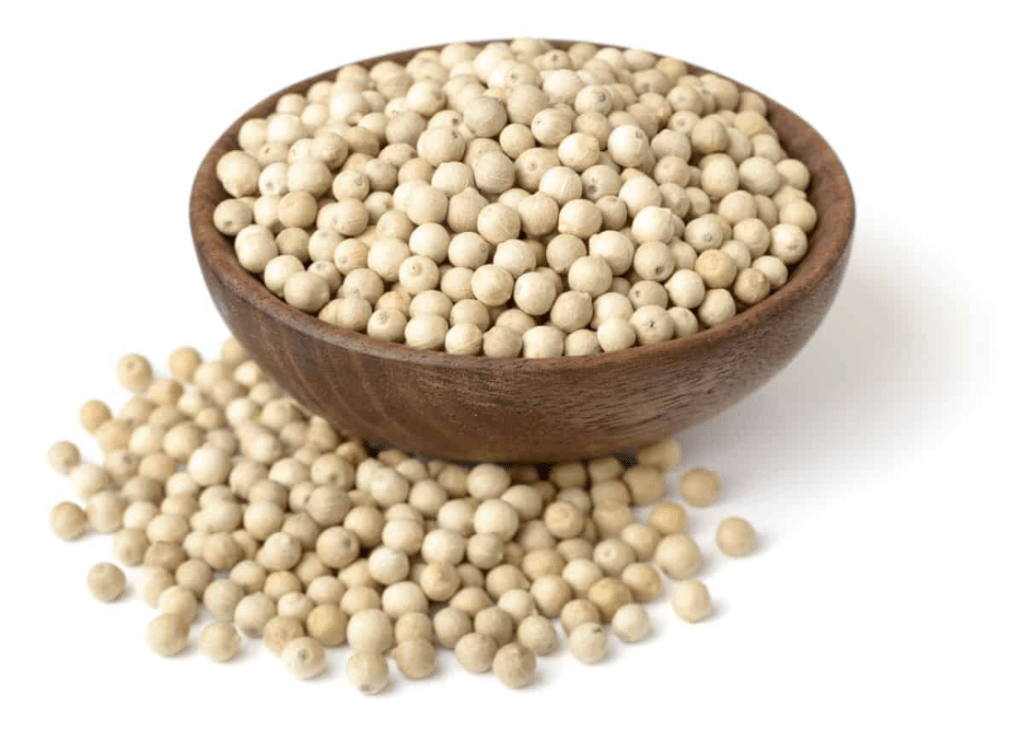
White Peppercorns (Piperaceae)
White peppercorns are simply dried seeds from an unripened fruit, that has been soaked until the skin comes off. This leaves a much milder, fruity, floral flavor commonly used in Asian and European cooking. White peppercorn’s white-grey coloring makes it ideal for blending in light-colored dishes like mashed roots or puree or omelettes where you do not want black flecks in the dish.
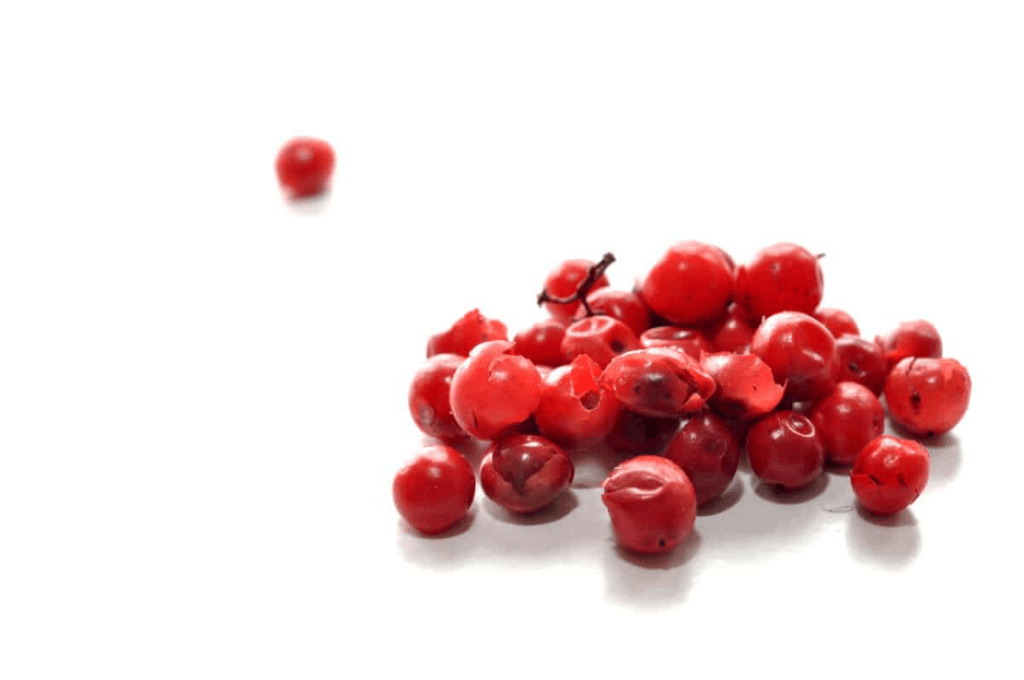
Red Peppercorns (Piperaceae)
These are the fully ripened peppercorn fruit that has been left in its natural state. Most are brined, but some are freeze-dried to hold flavor and color. They are also hard to find as the global market is for mainly black or white peppercorns.
The ideal is to crush these berries and use them in a marinade.
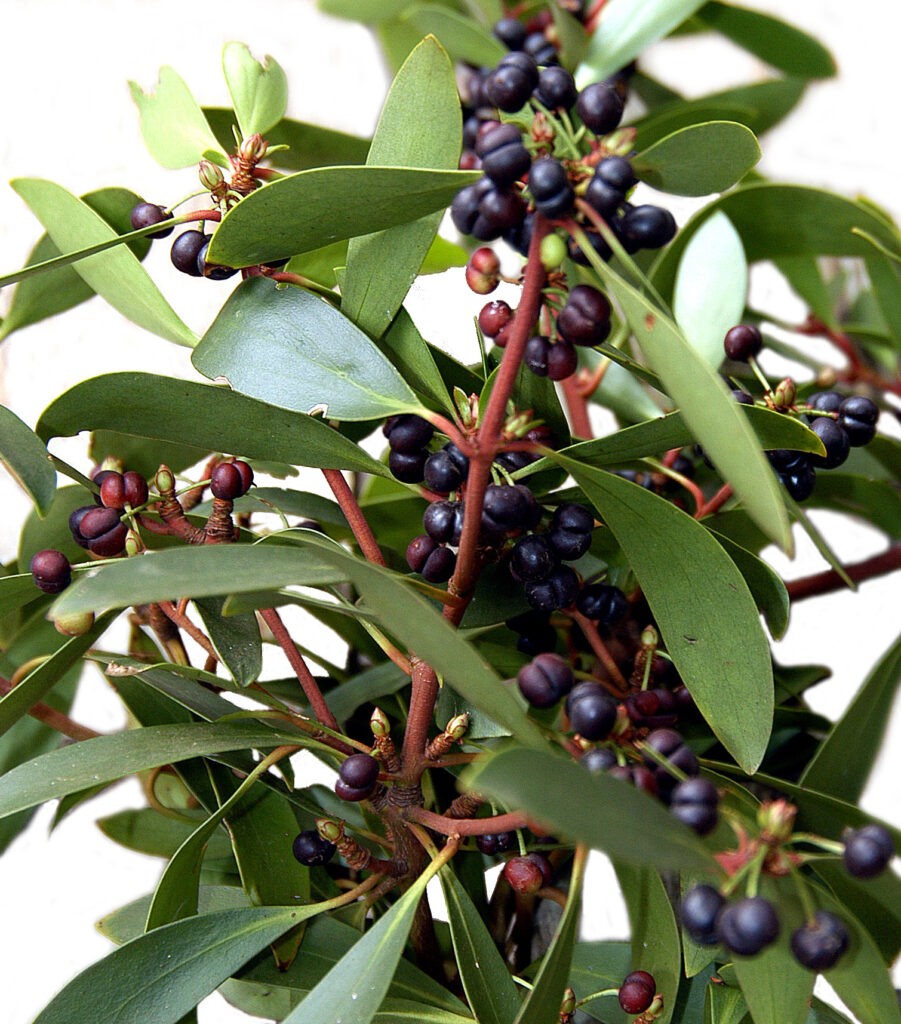
Tasmanian Pepperberry
I had never heard of this pepper-like spice before, so have never tasted it. I have read you can crush the dried berries by hand.
This is an Australian, Tasmanian pepperberry that was oft used as a colonial pepper substitute, but is now known as a “bush condiment” that has a peppery flavor. It can be used similar to black peppercorns just crushed over a dish, but I read it also has an herbal quality to it.
According to BushTuckerRecipes Pepperberries will bleed a soft pink colour into marinades or pickle solutions, pale sauces and yoghurt. Use it for preparing savouries and soups, vinaigrettes, ice cream jellies, candy, pasta, and game, etc. Use with vegetable sticks, bread sticks, turkish bread, corn chips or on nachos or enchiladas.
HerbiesSpices wrote that Pepperberries are dark-blue to black in colour and have an intensely strong pepper bite that is accompanied by a mineral-like aftertaste that lingers and builds in heat over a period of about 5 minutes after consumption. Use with care, about one quarter the amount one would use of conventional pepper.
SeriousEats wrote that Tasmanian pepper joins the ranks of spices like grains of paradise, ingredients with flavors so complex and varied it’s hard to pin them down to a single analogy or referent.
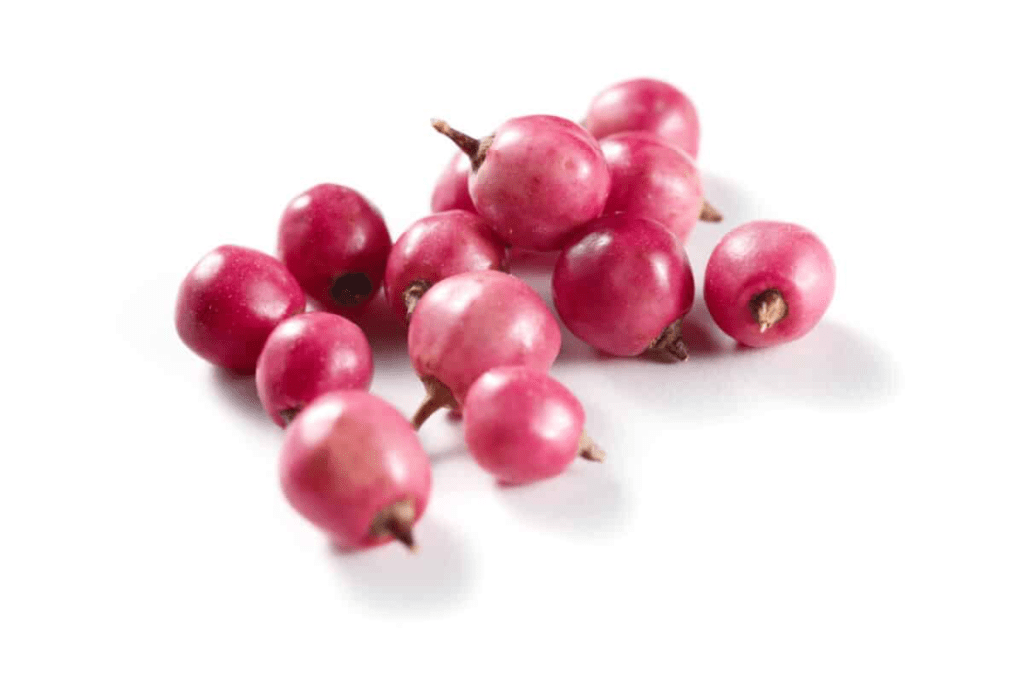
Pink Peppercorn
I have not used these peppercorns, so have had to rely on others to explain this spice. If I want to add color to a dish I will use other ingredients, and if I want pepper I will choose that spice.
Wikipedia writes that the pink peppercorns are the fruits of the Peruvian pepper tree, Schinus molle, or its relative, the Brazilian pepper tree, Schinus terebinthifolius, plants from a different family (Anacardiaceae). As they are members of the cashew family, they may cause allergic reactions, including anaphylaxis, for persons with a tree nut allergy.
Pink peppercorns are pungent and slightly sweet, but not nearly as flavorful as true pepper. But are often sold as “pink peppercorns” and often blended with commercial pepper. While they do resemble peppercorns and have a peppery flavor, they are not the real fruit.
Also these peppercorns should be crushed and not ground since it is evidently flaky in texture.
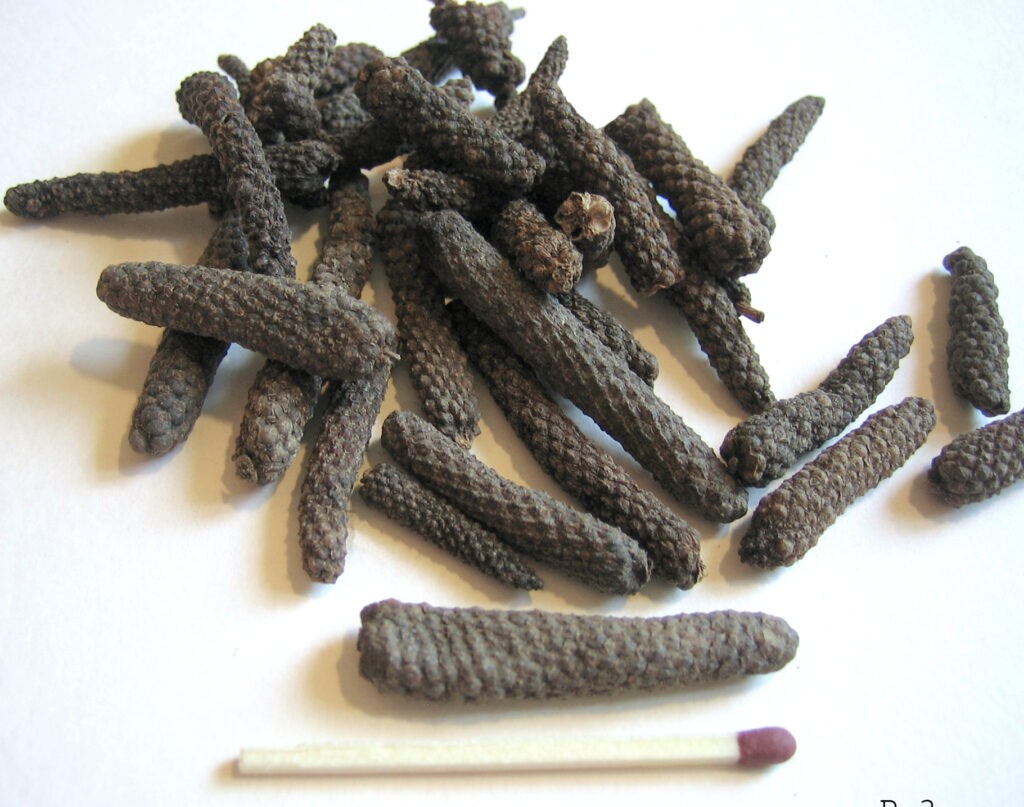
Long Peppercorns (Piperaceae)
I have bought this spice, used it in some dishes, and found it was a very nice addition.
Long pepper (Piper longum), sometimes called Indian long pepper or thippali, is the fruit from a flowering vine in the family Piperaceae. While no longer used all around the world, according to Wikipedia, it is still used in Indian and Nepalese vegetable pickles, some North African spice mixtures, and in Indonesian and Malaysian cooking. Another species of long pepper, Piper retrofractum, is also known as the Balinese long pepper or Javanese long pepper, is a flowering vine in the family Piperaceae. They are interchangeable, but the longum version is black-brown and the retrofractum long pepper has a reddish hue.
When fresh, it has an intense heat, and when the oils are released it smells like a combination of cinnamon, ginger, and nutmeg; which together adds complexity to any spice blend. However, the pepper has a long shape and hardness that can make it a challenge; sure you can grind it various ways, but if you cook it whole be sure to remove it before serving.
Long Pepper pairs well with all sorts of meats, many vegetables, stews, even spicy, fruity dessert dish. While you can infuse its flavor by using it whole in a stew, it typically is ground before using, to release its essential oils and flavor. To grind Long pepper break or snap it up into smaller pieces, if you can, then add to the peppermills and grind (1). I have used my planer to grind when I need just a bit, but do so carefully, and of course you can also use a pestle and mortar. I add this pepper to chicken or turkey broth soup for a slight lingering taste and heat of the pepper.
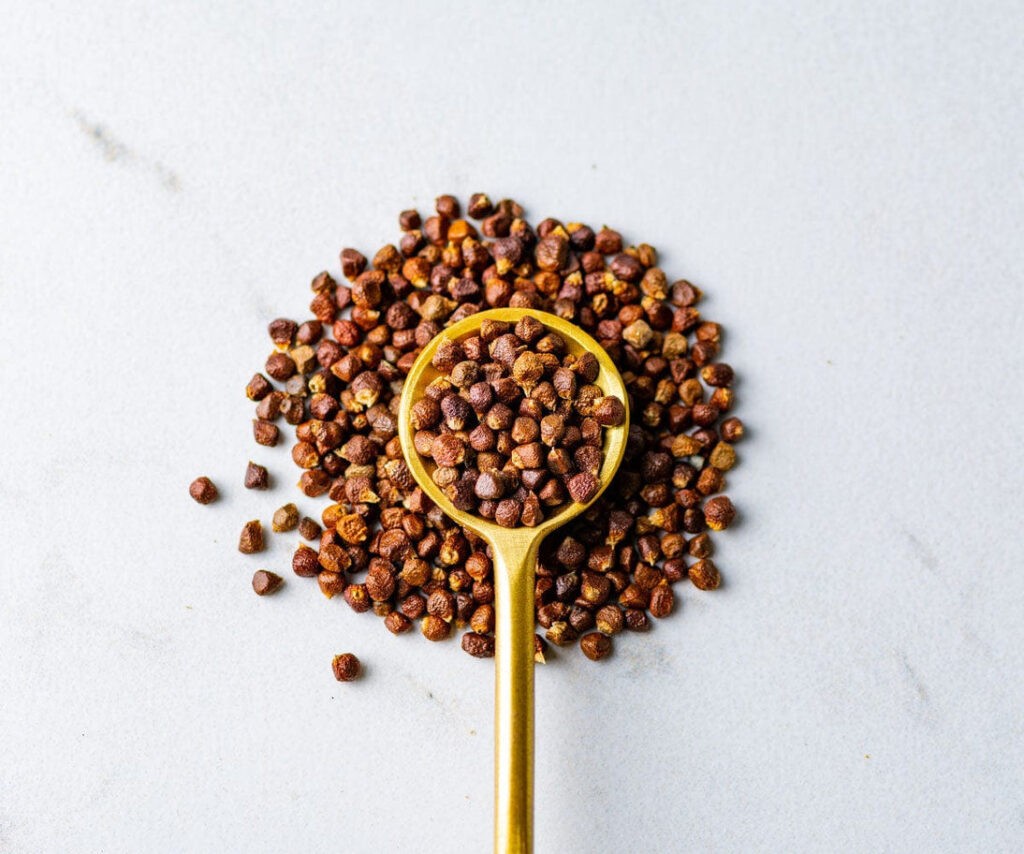
Grains of Paradise
This is a spice I have not used nor tasted, so all the information comes from others.
Grains of Paradise (Aframomum melegueta) are grown in West Africa, and are an oft used replacement for pepper there (and in North Africa). It is comprised of seeds, that are red-brown in color and shaped like pyramids, with a woodsy, citrus, and herbal flavor, some add juniper as a taste, that bursts with heat in the mouth, before fading. Grains of Paradise are in the ginger family, related to cardamom.
If you are cooking Middle Eastern, African, or Indian dishes, or “ish” dishes, here are some ideas to use this spice.
- Lightly crush or crack a couple of seeds and toss into rice as it’s cooking and importantly remove before serving.
- Use cracked seeds to flavor oil or butter before sauteing vegetables.
- Use in place of black peppercorn when making homemade chai.
- Or grind and use to top dishes for added spice (but test out first to make sure it is good).
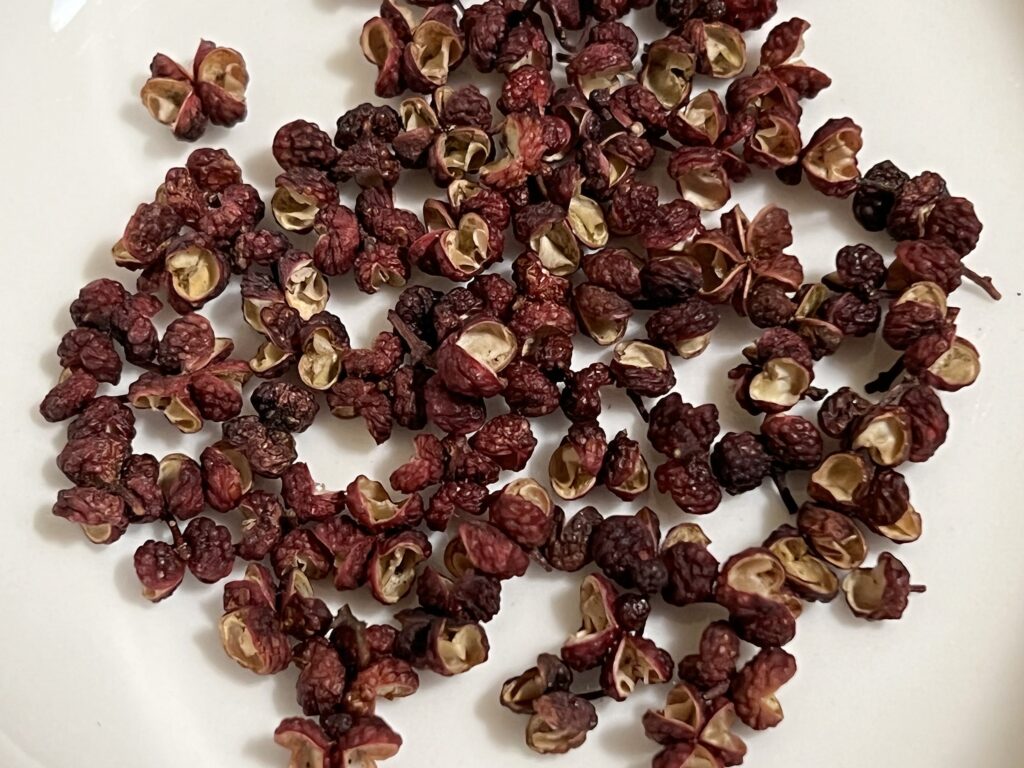
Reddish Brown Sichuan Pepper
Recently, from 1968 to 2005, the FDA banned the importation of Sichuan peppercorns (Zanthoxylum simulans) because they were found to be capable of carrying citrus canker. But the ban ended in 2007 and Sichuan Pepper again became available to the USA. The reason for the ban was that these are the berries of the prickly ash tree, which is a member of the citrus family and is not a proper “pepper”; in fact there is no real heat associated with this spice. However, as it is often used with peppers (of either type) people think it is hot.
Wikipedia states that Sichuan pepper is an important spice in Chinese, Nepali, Kashmiri, Tibetan, and Bhutanese cookery of the Himalayas. Sichuan pepper, to me anyways, has a citrus-like pepper flavor, and we all know that it can induce a tingling numbness (some have described as like an electric toothbrush), that Wikipedia indiates is akin to a 50-hertz vibration in the mouth due to the presence of hydroxy-alpha sanshool. However, it is neither a pepper nor a chili, but a different fruit.
Once harvested and dried, the stems and shiny black seeds inside the husk are discarded as they are hard and tasteless. It is the husk of this fruit that is what we know as Sichuan pepper or peppercorn. It is used whole, or ground up, say in Five Spice mixture. But you should not use Sichuan pepper like our everyday pepper, and grind it over food. It needs a little processing first, so only make enough that you need as the spice effectiveness fades over time.
- Make sure you only have the hulls and no seeds
- Then dry roast the hulls until they start to release the aroma and look a little oily on the surface.
- Remove immediately, as overcooked they become bitter, and let them cool.
- Then grind in mortar and pestle or electric grinder.
- Then sift to remove harder bits and get the powdered bits into a bowl.
Cooking with the whole hull or ground is easy and lends its flavor well. And you do not need to add much, say 1/2t for a serving of 2 people. Unless the spice is older, then you may need to add more for the expectant result.
- Cooking in oil to infuse its flavor for stir-fry dishes, then remove before adding ingredients.
- Mix ground spice with dressings for cold dishes.
- Stir the ground spice into dumpling fillings.
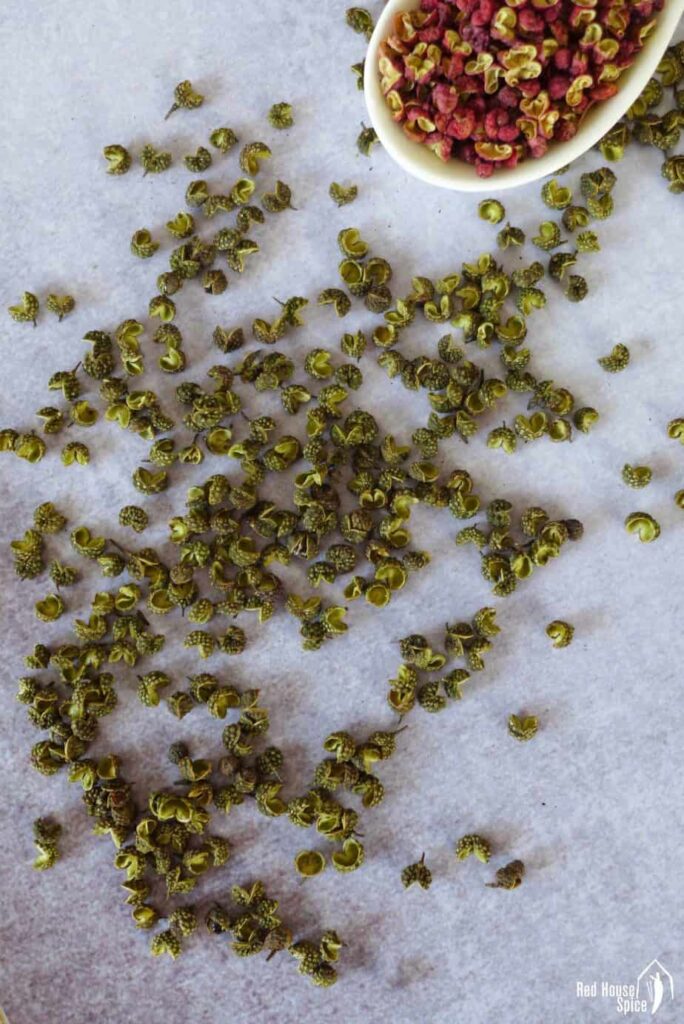
Green Sichuan Pepper Corn
I have not seen the green version of this pepper, so have not tasted it, yet. But I read that this is a rarer variety of Sichuan pepper, that comes from a different type of Prickly Ash tree. The green version is supposed to have a richer scent of citrus, but will cause that numbing sensation, and should be used just as sparingly.
In Closing This Chapter
I found some interesting tidbits that do not fit well in an introduction to pepper, so bundled them here.
Tea + Pepper
Did you know that pepper and tea are a thing?
Zizira states that black pepper tea can help in stimulating the nasal passages and the throat. This provides relief from sneezing, runny nose, and cough. Black pepper also helps in warming the back of the throat and soothing the tonsils hence it can be used as a remedy to soothe a cough and even tonsilitis. Actually, in Ayurveda practices black pepper in tea is well known for its benefits (1).
- CAUTION: If you take anticoagulant, antiplatelet drugs there may be a problem as black pepper may slow blood clotting, according to WebMD. High consumption of black pepper may have other drug impact (2).
- Additionally, some people may be allergic to black pepper (3).
- However, black pepper contains an active compound called piperine, which has been often associated with anti-inflammatory properties (4, 5).
- Studies have shown that doses of piperine often range from 5mg to 20mg per day, with 5mg being the most common.
You may have already tasted black pepper in tea if you drink Masala Chai tea as it is often one of the many ingredients. Order a DIY Masala Chai kit here: Verdant Teas
Below is a common, simple home remedy tea recipe.
- Pepper Ginger Tea
- 2C filtered water
- 1t freshly ground black pepper
- 1T honey
- 1t lemon juice (preferably freshly squeezed)
- 1t heaping freshly chopped ginger
- Steep 3-5 minutes
Cooking With Pepper
In standard recipes, avoid adding ground pepper until the very end of the cooking process, this is to assure that its flavor and pungency is maintained.
With roasting veggies or grilling meat (steak especially), you can add the pepper before cooking so the flavor can work its way into the dish. But for stir-fry or sautéing, I wait till the end.
When cooking a recipe using large amounts of pepper over high heat, be aware that smoke from the pepper can cause nasal and eye irritation, so be sure to have proper ventilation.
Pepper does not need to be added to every dish, only add to those where the addition of this spice will make a difference. We now use pepper as an afterthought, and never enough to actually taste it in the dish. So I stopped using it on everything, and when I do use it, it is with intent and I use enough of the spice to taste it.
—Patty
—**—
PattyCooks is affiliated with Verdant Teas.